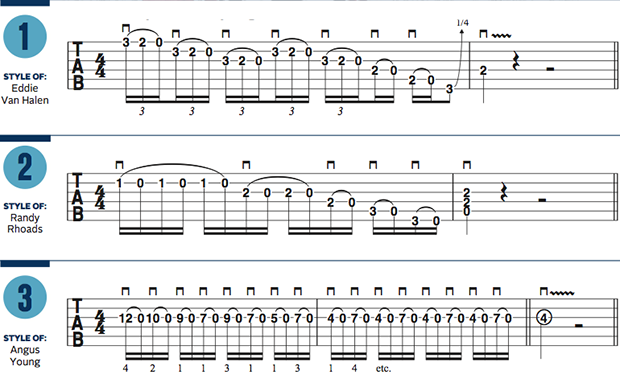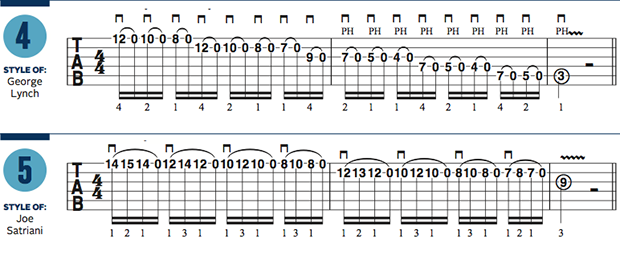How to Play Blazing Open-String Licks
Open-string licks are often used as fills embellishing open-chord riffs, and they can add an element of flash during solos.

Licks incorporating open strings are a popular component of rock guitar style. They’re often used as fills embellishing open-chord riffs, and they can add an element of flash during solos.
Ear catching and colorful, they form an integral part of the rock vocabulary and have been favored by blues-rock-based guitarists since the dawn of rock and roll.
Like so many of the traditional ideas and concepts that have helped define the foundational rock style, they are still popular and used by contemporary guitar players across numerous subgenres.
With open strings comes the potential for noise, so it’s vital that you carefully pull off downward and outward, away from the neck, without disturbing the idle lower strings. This pulling action will also help balance the volume of the slurred and picked notes. Angle the fretting hand slightly, with the side of the first finger resting gently against the lower edge of the fretboard for stability.

FIGURE 1: This is an open-string pull-off cascade that combines notes from the e dorian mode and e blues scale. after the rapid-fire 16th-note triplet sequence, the rhythm slows down to 16th notes, pulling off from the index finger, with the middle finger performing the low quarter-step pull bend on the low E string’s third fret.
FIGURE 2: This lick dances around an open am chord shape. use your index finger to fret the notes on the B, G and D strings, with the middle finger pulling off on the A and low E, resolving to an open A5 power chord. practice slowly and memorize before applying speed.
FIGURE 3: This bouncy 16th-note lick is based on the G Mixolydian mode, with pull-offs to the open string from a fretted melodic sequence, the open string serving as a pedal tone. pull off slightly downward, keeping the index finger fairly flat to mute the top two strings.
All the latest guitar news, interviews, lessons, reviews, deals and more, direct to your inbox!

FIGURE 4: This is a scalar open pull-off run in a dorian that creates wide intervals and a very angular, bouncy melodic contour. in bar 2, the fretted notes are played as slight pinch harmonics—lightly graze the string with the tip of the pick-hand index finger or thumb as you perform the downstrokes.
FIGURE 5: This is a 16th-note run based on the E aeolian mode and a pattern of a hammer-on followed by a double pull-off to an open string. mute the string above and below the one being played with your fret-hand index finger, pulling downward and away from the string to avoid unwanted noise.
